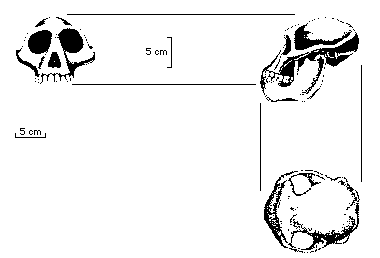

This species of hominid was named after the Afar depression in which the first fossil specimens were found. In 1973, while digging at Hadar in northeastern Ethiopia, Donald Johanson and Maurice Taieb discovered fractions of a fossil skeleton which later become known to the world as Lucy (named after the Beatles' song 'Lucy in the Sky with Diamonds'). Potassium argon dates have placed A. afarensis between about 4 million and 3 million years ago.
This species, along with the later Australopithecus africanus, are considered the gracile australopithecines because of the slightness of their facial features. Because A. afarensis shared many features with both apes and modern humans, it is believed that other hominid groups evolved from this species. Specimens of A. afarensis display consiberable size variation between them, though they appear to be powerful and heavily muscled. And although A. afarensis was bipedal as evidenced by the famous footprints found at Laetoli by Mary Leakey, it is believed to have spent a good deal of its time in trees. Tools have not been found in association with A. afarensis, leading to the important conclusion that bipedalism evolved in hominids before the ability to create tools.
| |
|
|